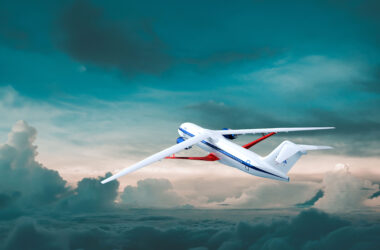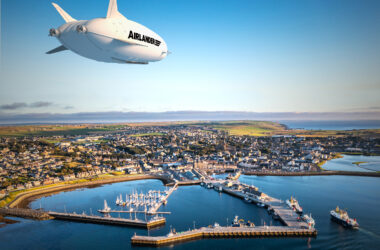Ammonia, composed of nitrogen and hydrogen, has emerged as a promising carbon-free alternative fuel. Recent innovations by Sunborne Systems, a spinoff of Reaction Engines, showcase ammonia’s viability and versatility as an energy source for aviation and beyond.
Sunborne Systems has successfully developed a novel ammonia reactor. The reactor cracks or decomposes ammonia into hydrogen and nitrogen gases through thermal management techniques and chemical processes. This breakthrough technology has potential applications as a power source for aviation, shipping, heavy transport, and high-energy industrial sectors.
How the Ammonia Reactor Works
The reactor uses heat and catalysts to crack ammonia into its components efficiently. Ammonia is heated to high temperatures, lowering the energy barrier for the decomposition reaction. With the aid of catalysts, the ammonia breaks down to produce hydrogen and nitrogen gases.

The pure hydrogen can then be used as a clean fuel, emitting only water vapour when combusted. By leveraging ammonia’s high hydrogen content, the reactor provides emissions-free energy. The thermal control system maintains optimal temperatures for the process, while the compact size allows integration into existing engines.
Applications in Sustainable Aviation
The aviation industry aims to reduce greenhouse gas emissions from jet fuel combustion. Ammonia offers a pathway to sustainable aviation as its hydrogen combustion only produces water and nitrogen. With an established transportation network, ammonia also has advantages over hydrogen fuel.

Sunborne’s reactor technology enables ammonia’s use as an aviation fuel. By retrofitting the reactors into jet engines, ammonia can be converted into hydrogen on-site to power aircraft sustainably. The reactors’ efficiency and adaptability accelerate aviation’s transition to low-carbon operations.
Beyond Aviation
The ammonia reactor’s applications extend beyond planes to ships, heavy transport, and high-energy industries. The technology’s efficiency and modular nature enable integration into engines and processes currently relying on fossil fuels. This provides a ready pathway to convert existing infrastructure into green operations.
By leveraging ammonia’s global storage and distribution system, the reactors unlock its viability as a widely deployable zero-emission fuel. Their development highlights how technical ingenuity can pioneer sustainable technologies and processes.
Sunborne Systems’ ammonia reactor represents a significant breakthrough in clean energy. The technology elegantly converts ammonia into hydrogen fuel through chemical processes and thermal engineering. With aviation as an initial target application, the reactors’ versatility also opens up emission-free power generation across transportation, shipping, and industry. Their development underscores ammonia’s promise as a sustainable fuel of the future.
TLDR:
- Sunborne Systems and Reaction Engines are pioneering ammonia as a sustainable fuel in aviation and maritime transport.
- The ammonia reactor and cracker technology offer zero-carbon emission solutions, promising a quick transition to sustainable energy in these sectors.
- Companies backing these innovations mean they could become mainstream, marking a significant stride towards global net-zero carbon emissions.








